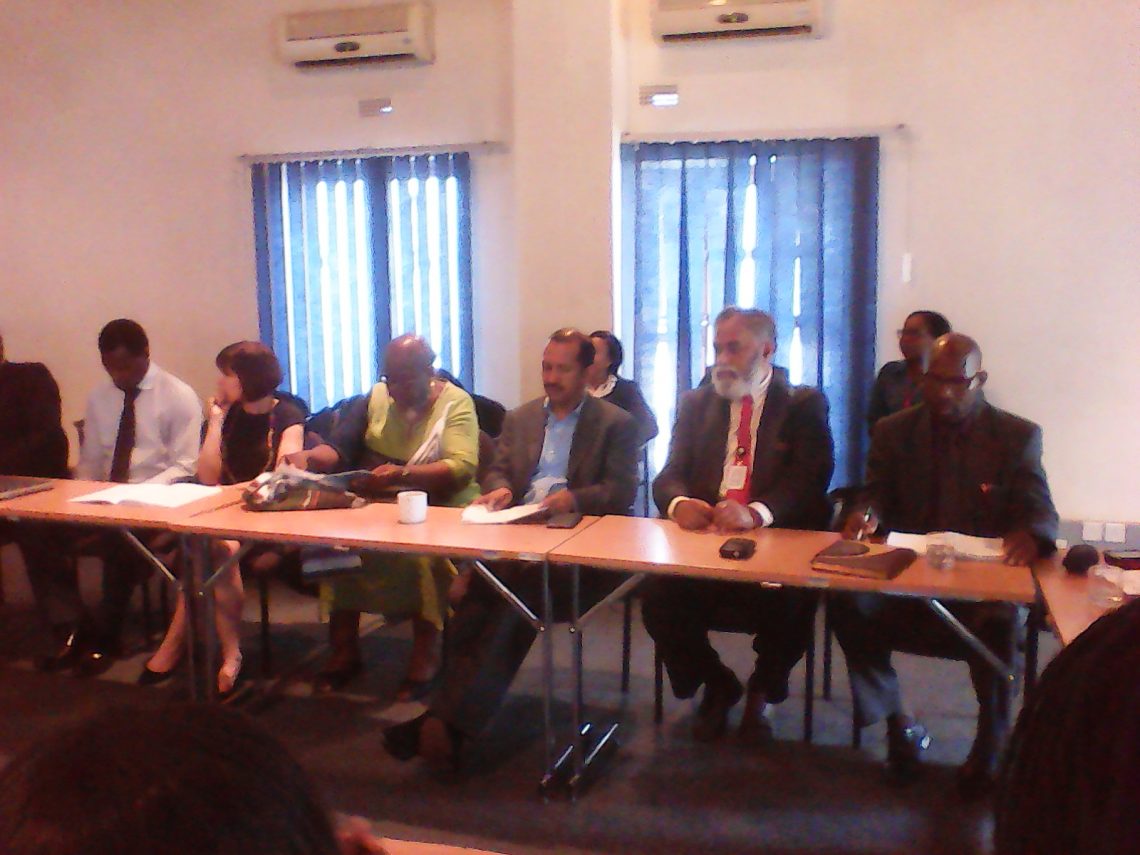In trying to reduce the stunting growth of children and understand the current nutrition context in Zimbabwe that would lay the future advocacy, resource mobilisation and analytical work under the Trust Fund, the World Bank has presented the feedback of the research it carried out.
For the past five years, World Bank has been moving with two goals which are: end extreme poverty and boost shared prosperity.
At a meeting held on the 22nd of February 2017 in Harare, Nkosinathi Mbuya, the senior Nutrition Specialist – Health, Nutrition and Population for World Bank said faster strategic partnerships and a robust nutrition financing landscape can help in reducing stunting growth in the country.
Mbuya said as other countries did, Zimbabwe must try to focus on enhancing country stewardship, institutionalisation, and accountability for results. Strengthening and institutionalisation service delivery platforms, scale effective actions across sectors and focus on quality, convergence and learning can also help.
According to World Bank report, the multi-sectorial strategy and commitment helped other countries in decreasing the level of stunting.
“Simultaneous access to food, care and health can be associated with the greatest decrease of stunting in Zimbabwe. For now, there is no money that is yet to be offered by the World Bank but I can promise that we will continue to put efforts in supporting the government of Zimbabwe in the next six months. Maybe a figure will be availed to support the country’s development.
“What I urge for is a multi-sectorial approach. We witnessed that it had helped other countries to reduce the level of stunting. For instance, Senegal is one of the countries that have achieved a reduction of stunting. Between 1990 and 2010 there was evidence that the rate of stunting was going down. They used strong local government support, decentralised management integrated community based service delivery. In Peru, conditional cash transfers to poor families and quality coverage of maternal and nutrition services have been provided. This was effective and if Zimbabwe can copy, it will definitely help in reducing stunting,” Mbuya said.
In Brazil, Mbuya said stunting was reduced by 30% in 30 years, using a multi-sectorial approach. Reduction in stunting , he said, could increase Gross Development Products by 4-11% in south Asia.
He added that there was need to scale up support for nutrition connecting ministries of Agriculture, Mechanisation and Irrigation, the Ministry of Finance and Economic Development as well as the Ministry of Health and Child Care.
Maternal education on early stimulation, growth and development, early childhood and preliminary education on women empoerment is vital in reducing stunting.
“From the research’s results, it shows that there was no improvement on the empowerment of women, quality reproductive health and family planning information and services. Therefore, line ministries need to engage in supporting the development of the country. For instance, the ministry of agriculture should make sure that there is adequate food for for food security. It needs to improve access to more diversified agriculture.
Adequate sanitation, care, food, minimum acceptable diet, good disposal of human waste and hand washing facilities have been listed as ways that help in reducing stunting in Zimbabwe and so are vaccination and skilled birth.
The report showed that stunting prevalence among children under 2-years old was high in Zimbabwe and this varies by socio-economic status. Poverty is a major driver in the country for stunting growth. He said education is also important and empowerment of women for results haven’t seen much change and improvement in as much as empowering women is concerned.
Mbuya indicated that It’s important to prioritize geographical areas where children with high prevalence of stunting growth and inadequate to all three drivers of nutrition are found as well as scaling up interventions by agriculture through improving food security.
From the World Bank research, only 6 percent children under 2 years have been said to have adequate access to all three drivers of nutrition. Eighty four percent households had access to health 29 percent had access to wash 19 percent to food and care.
Contributing on how the Word Bank can add impetus to ongoing efforts by government and other stakeholders without duplicating the efforts, Ancikaria Chigumira, the Deputy Director for Nutrition Services (MHoCC) said the country needed support for there was still evident lack of resources.
“There is need for budgetary allocations and need to increase coverage. Let us look on the country holistically. We need to learn from those who are doing well. We want more resources as a country to make sure every village is active. Cadres should be countrywide other than talking from national or provincial levels. With the increase ods support from World Bank, advocacy is needed since we have political commitment in Zimbabwe. Research is very vital in nutrition,” she said.
Contributing on the same workshop, Delilah Chigumba, Food and Agriculture Organisation of the United Nations (FAO) Nutrition and Food Safety Officer (Programmes Section) said Zimbabwe needed further analysis on the data that it has on poverty, crisis and malnutrition levels.
She said these evidence-based programmes would help to understand the difference between urban and rural areas and know if there were any improvements or not.
